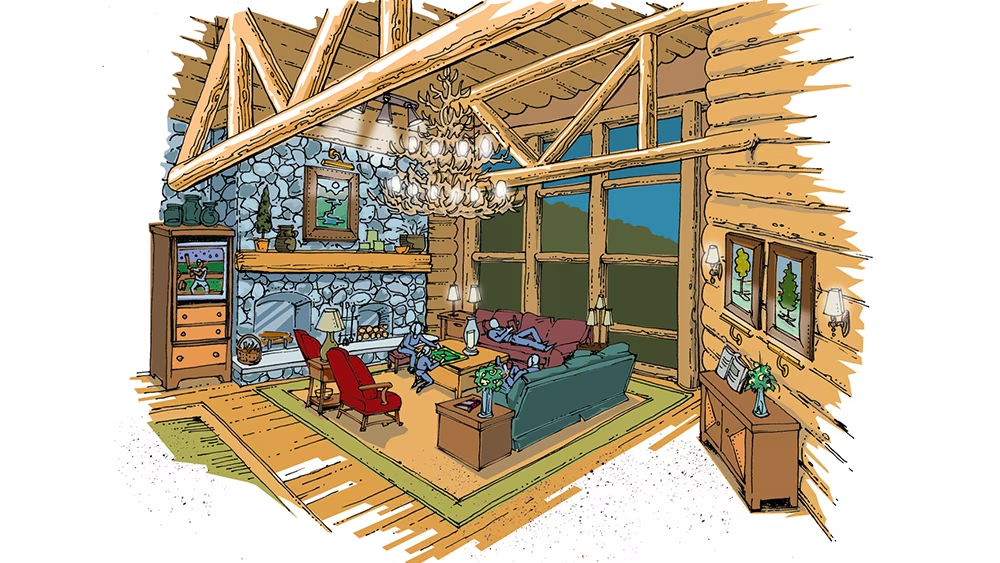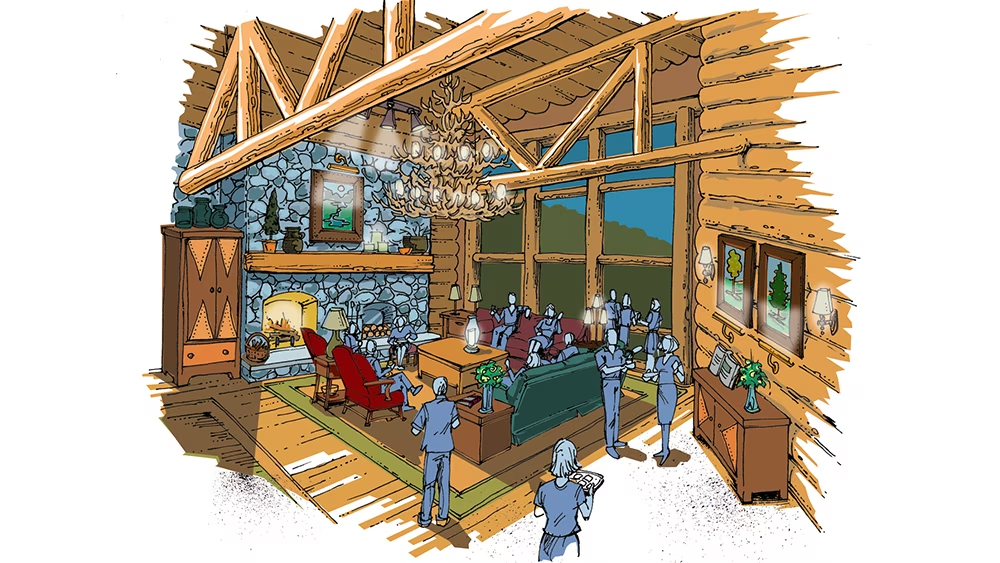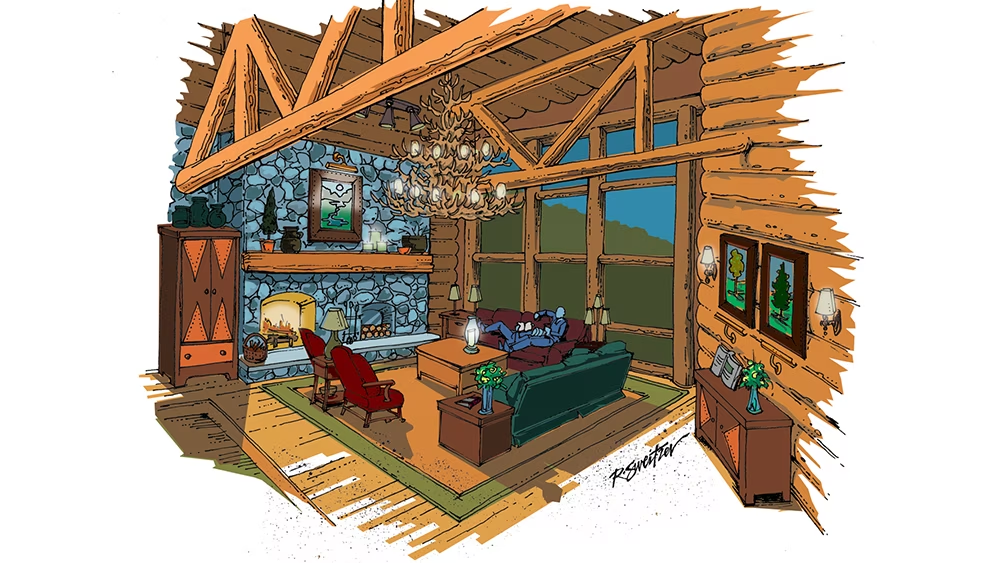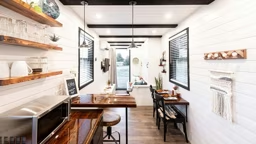

Critical to achieving a well-designed and comfy cabin, lighting can change the way we see everything. It can transform the atmosphere of any room by dimming, highlighting, brightening and obscuring.
The key to good lighting design is in the flexibility of the system. For example, in a major living space like a great room, lighting needs to be versatile enough for quiet nights by the fire and lively evenings with friends – with the flick of a switch. Here’s how to make the most of lighting.
See also City Dwellers Feel the Pull of Cabin Life
Types of lighting
There are three basic types of lighting that you’ll use throughout your cabin:
- General lighting (chandelier and track lights) provides overall ambient light in a room. It doesn’t have a particular highlighting or functional purpose; it’s used only to provide the room with light.
- Task lighting (floor and table lamps) is used for certain tasks or functions in any given room or space. This includes reading in the study, cooking in the kitchen or working at a desk.
- Feature lighting (picture lights, wall sconces) highlights and accents focal points, furniture, texture and other decor elements in a room.
See also Crafty Cabin Retreats
Lighting techniques
Downlighting
Purpose: Concentrates direct and energy efficient lighting in specific areas.
- Typically recessed into ceilings where beams form downward arcs of light in varying sizes.
- Works well in rooms with high ceilings because it allows light beams to overlap and become more diffuse.
Uplighting
Purpose: Directs light toward the ceiling, which acts as a reflector. (Hint: The lighter the ceiling color, the greater the reflection.)
- Enhances the height of a room, making it look more spacious.
- The many forms include wall-mounted and freestanding, high or low-level.
Wall washing
Purpose: Emphasizes vertical surfaces, and is especially good for highlighting wall texture, pictures and cabinets. Also makes a room feel wider.
- Typically, ceiling-mounted fixtures work best. They direct an even light across the walls and create a significant amount of general lighting in a space.
- Positioning is critical. Fixtures should be at least 28 to 40 inches apart with the distance from the wall determined by type of fixture and ceiling height.
Feature lighting
Purpose: Highlights special areas and decorative items in a room.
- Low-voltage direct light sources are the most versatile and most effective when hidden and on a separate control switch.
- When highlighting an object or area, the wall-mounted fixture should be between the wall and the viewer.
In the Mood
One great room, three functions, and a lighting design to fit each one:
THE GAME ROOM
Function: Reading, playing games and watching TV.
Scheme: Well-lit, even light that fills the whole room, especially activity areas.
Tools: General light on full blast supplemented by task lighting in activity areas and feature lights to soften the atmosphere.
Randy Sweitzer illustration













